Understanding the Intersection of Anxiety and Autism in Children
Anxiety affects up to 40% of children with autism spectrum disorder (ASD), often intensifying their challenges through increased repetitive behaviors, rigid routines, and sensory sensitivities. Supporting these children with effective behavior strategies is key to improving their social interaction, emotional well-being, and overall quality of life. This article explores practical, evidence-based behavioral interventions to manage anxiety in children with autism, emphasizing therapies tailored to their unique needs and developmental profiles.
Applied Behavior Analysis (ABA): Foundations and Benefits for Anxiety Management
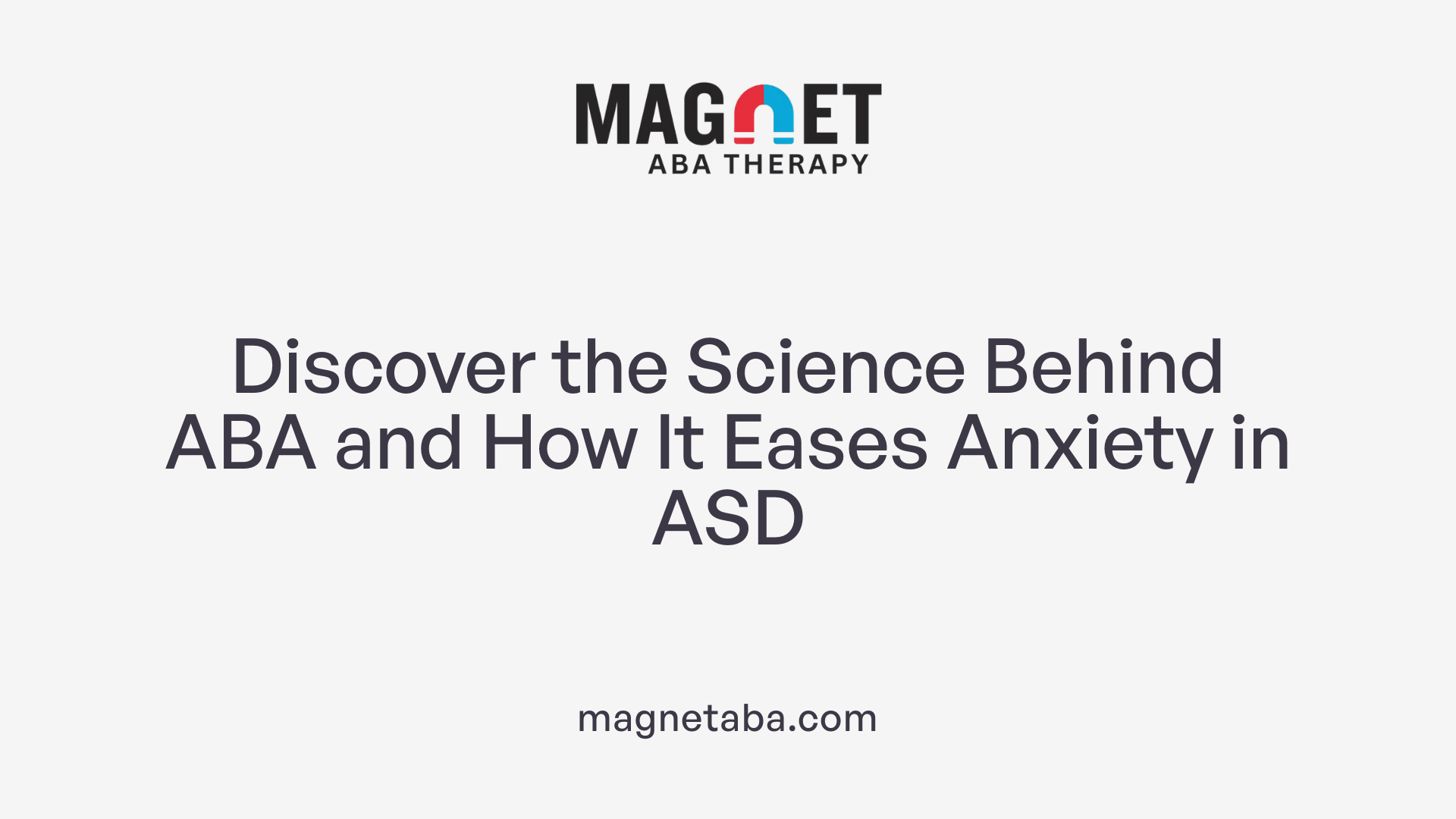
What is Applied Behavior Analysis (ABA) therapy?
Applied Behavior Analysis (ABA) therapy is a scientific and evidence-based approach that focuses on understanding and modifying specific behaviors. It helps improve social, communication, and daily living skills in individuals with autism spectrum disorder (ASD).
ABA uses methods such as positive reinforcement to encourage helpful behaviors and reduce harmful ones. It breaks down complex skills into smaller, manageable steps and analyzes the antecedents (what happens before a behavior), the behavior itself, and the consequences (what happens after). This A-B-C model guides learning and behavior change.
Programs are highly individualized, with clear goals tailored for each child. Therapy sessions can occur in various settings — including homes, schools, and communities — ensuring real-world application and flexibility.
How does ABA therapy benefit individuals with autism and anxiety?
ABA therapy benefits children with autism by teaching new skills and reducing problem behaviors in a structured, evidence-based way. For children experiencing anxiety, ABA helps identify triggers and introduces coping strategies through gradual exposure and reinforcement.
Children with autism and anxiety often use repetitive behaviors and rigid routines as coping mechanisms. ABA works to gently modify these behaviors to promote healthier alternatives, improving emotional regulation.
By strengthening communication, social interaction, and daily living skills, ABA supports greater independence and reduces anxiety that arises from uncertainty or unfamiliar situations.
How does ABA enhance social, communication, and daily living skills?
ABA targets core areas affected by autism and anxiety through systematic teaching:
- Social Skills: Through techniques like Discrete Trial Training (DTT) and Pivotal Response Training (PRT), ABA encourages engagement, sharing, and conversational skills.
- Communication: ABA supports language development and alternative communication methods, enhancing a child’s ability to express needs and emotions.
- Daily Living: ABA teaches practical skills such as dressing, eating, and toileting using reinforcement and repetition.
These improvements not only boost confidence but also reduce anxiety by increasing predictability and control in the child's daily environment.
Overall, ABA therapy offers a scientifically validated framework for supporting children with autism and anxiety, fostering meaningful progress in behavior and emotional well-being.
Key ABA Techniques Utilized to Address Anxiety in Children with ASD
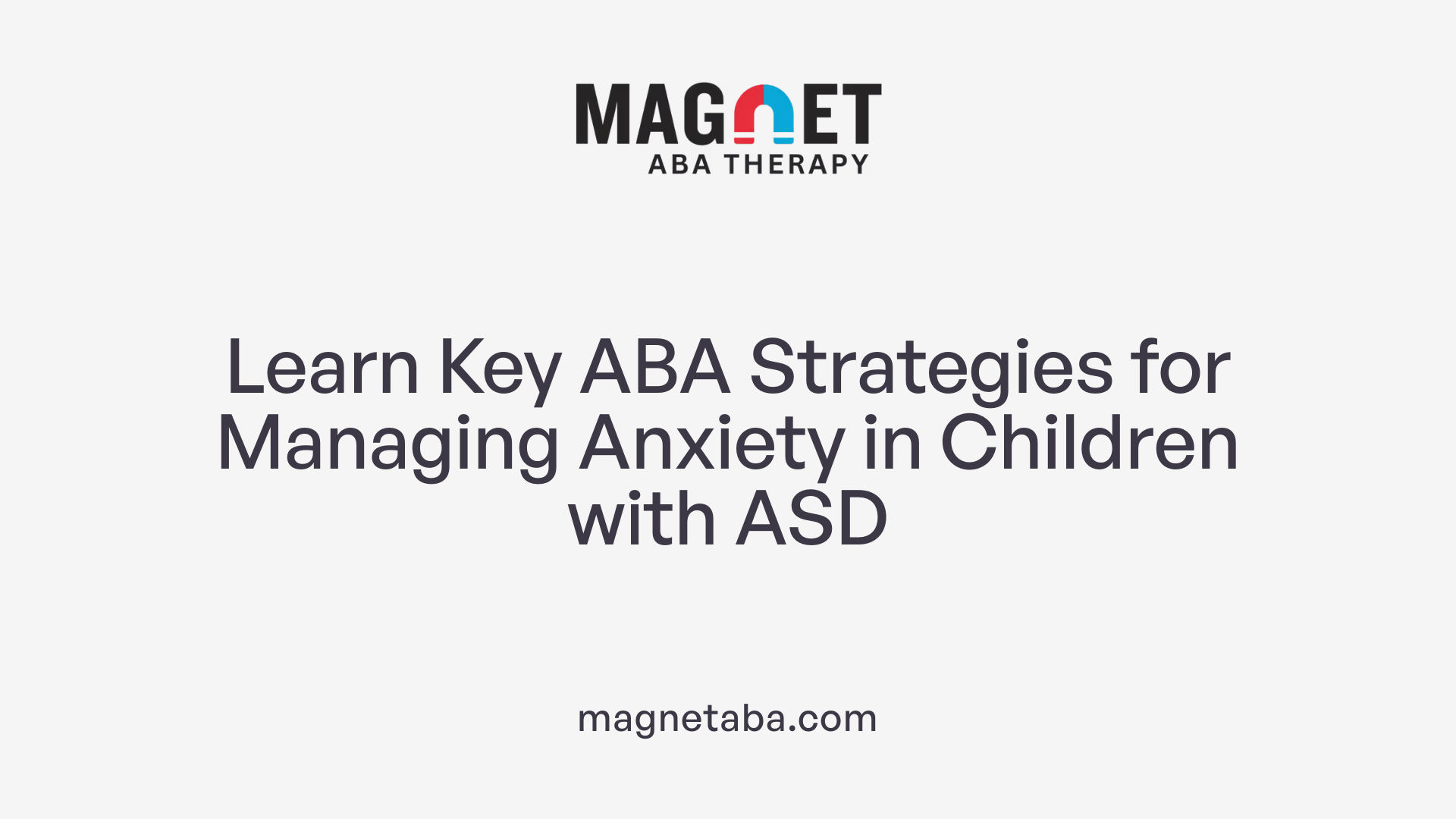
What are some common techniques used in ABA therapy?
Applied Behavior Analysis (ABA) therapy incorporates various strategies to address anxiety and other challenges in children with Autism Spectrum Disorder (ASD). One foundational technique is positive reinforcement, where desirable behaviors are encouraged by rewarding the child, increasing the likelihood those behaviors will continue.
Discrete Trial Training (DTT) is a highly structured teaching approach that breaks down skills into small, manageable steps. Each trial provides a clear instruction followed by a prompt, the child's response, and a reward or corrective feedback, allowing systematic learning.
Pivotal Response Training (PRT) contrasts with DTT by focusing on natural environments and child-initiated interactions. It aims to improve pivotal skills such as motivation and communication, fostering more generalized behavior change beyond therapy sessions.
ABA also uses prompting and fading, where prompts (like verbal cues or physical guidance) help the child perform a behavior, which are gradually reduced to increase independent responses. Behavior chaining teaches complex tasks by linking individual steps in sequence, making learning achievable for multi-step activities.
Visual tools are crucial supports in ABA therapy. Visual aids such as charts, picture schedules, and social stories help children understand expectations and routines. Behavior contracts document goals and rewards, clarifying what is expected and motivating engagement.
Natural environment teaching (NET) enhances learning by embedding instruction within the child’s daily routines and interests, making skills more relevant and easier to generalize. Video modeling is another effective technique where children watch videos demonstrating desired behaviors to imitate.
Together, these ABA techniques create a comprehensive framework for managing anxiety by improving functional skills, communication, and coping mechanisms within supportive and structured settings.
Tailoring ABA Therapy: Who Provides It and Suitability Considerations
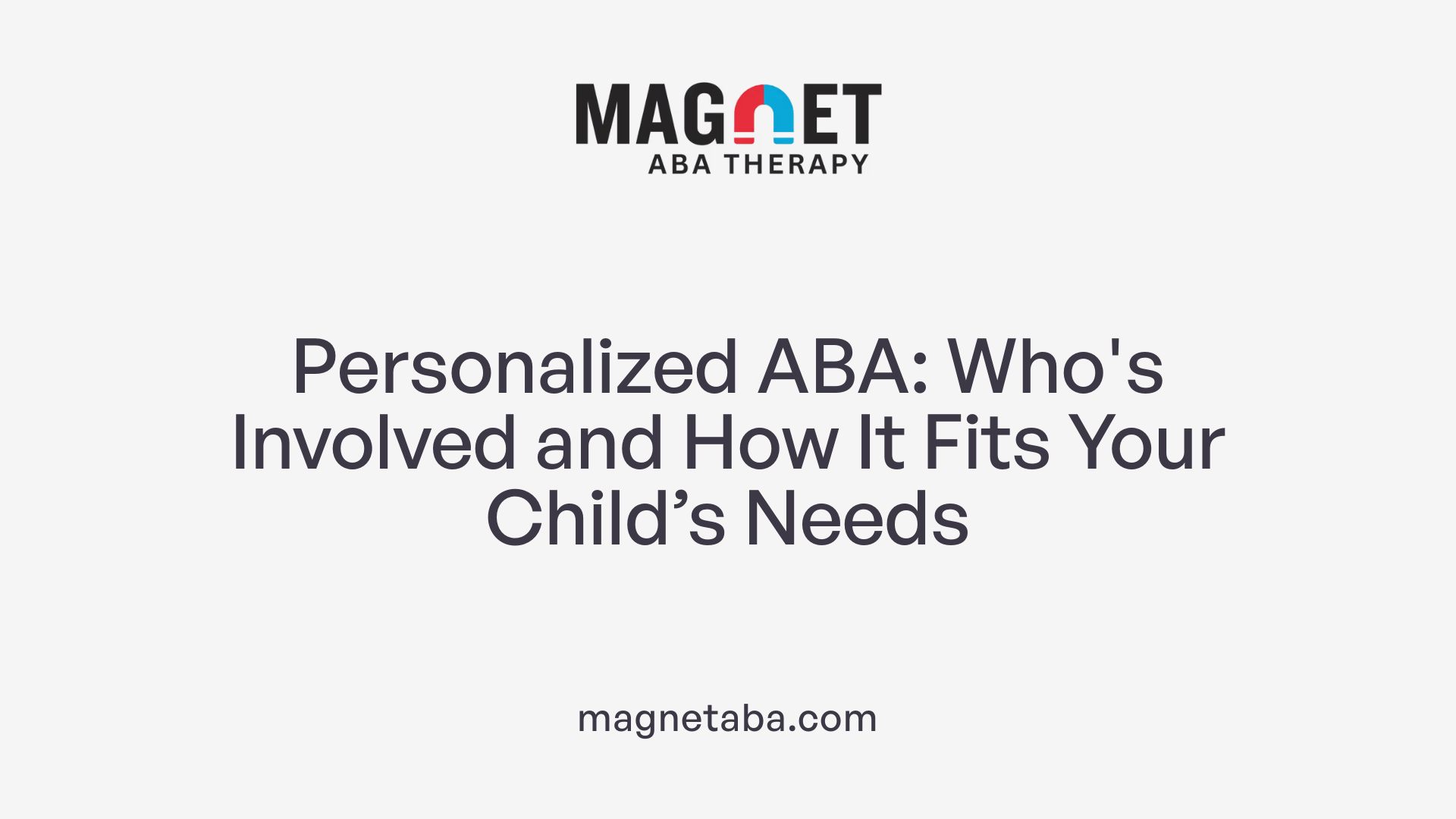
Who typically provides ABA therapy?
ABA therapy is usually delivered by qualified professionals known as Behavior Analysts. These include Board Certified Behavior Analysts (BCBAs), experts with master’s degrees in applied behavior analysis, psychology, or education who have completed extensive supervised fieldwork. They develop detailed, personalized intervention plans to address individual needs.
Additionally, Behavior Technicians or Registered Behavior Technicians (RBTs) assist in implementing these plans. RBTs work under the close supervision of BCBAs and provide hands-on therapy directly to children. Settings for ABA delivery vary widely and include clinics, schools, hospitals, and community-based centers.
Is ABA therapy suitable for all individuals with autism?
While ABA is one of the most evidence-based and effective therapies for children with autism, it's not universally the perfect fit for every individual. The decision to start ABA therapy should be personalized, based on a thorough assessment of the individual's abilities, behavioral challenges, and family circumstances.
Some children respond excellently to early, intensive ABA programs, showing improvement in communication, social skills, and behavior. Others might require alternative or complementary therapies due to their unique developmental profiles or personal preferences. Active caregiver involvement is crucial across all settings to maximize therapy benefits.
Importance of personalized treatment plans and caregiver involvement
ABA therapy places a strong emphasis on customizing treatment plans to the child’s specific strengths and challenges. This personalized approach helps tailor goals, teaching methods, and intensity.
Caregiver involvement is vital. Parents and family members contribute to consistent reinforcement of skills at home, provide valuable insights about the child, and support the therapeutic process. Effective collaboration between therapists and caregivers ensures continuity and enhances positive outcomes.
| Aspect | Description | Additional Detail |
|---|---|---|
| Providers | Behavior Analysts (BCBAs), Registered Behavior Technicians (RBTs) | BCBAs create plans; RBTs implement under supervision |
| Delivery Settings | Clinics, schools, hospitals, community centers | Therapy environment adapted to child’s needs |
| Suitability Assessment | Based on individual strengths, challenges, preferences | Not all children respond equally; alternatives may be needed |
| Treatment Planning | Personalized, goal-oriented interventions | Tailored to child's needs and family context |
| Caregiver Involvement | Essential for consistency and support | Parents learn techniques and reinforce therapy at home |
Complementary Behavioral Strategies for Children with Lower Cognitive Skills or CBT Limitations
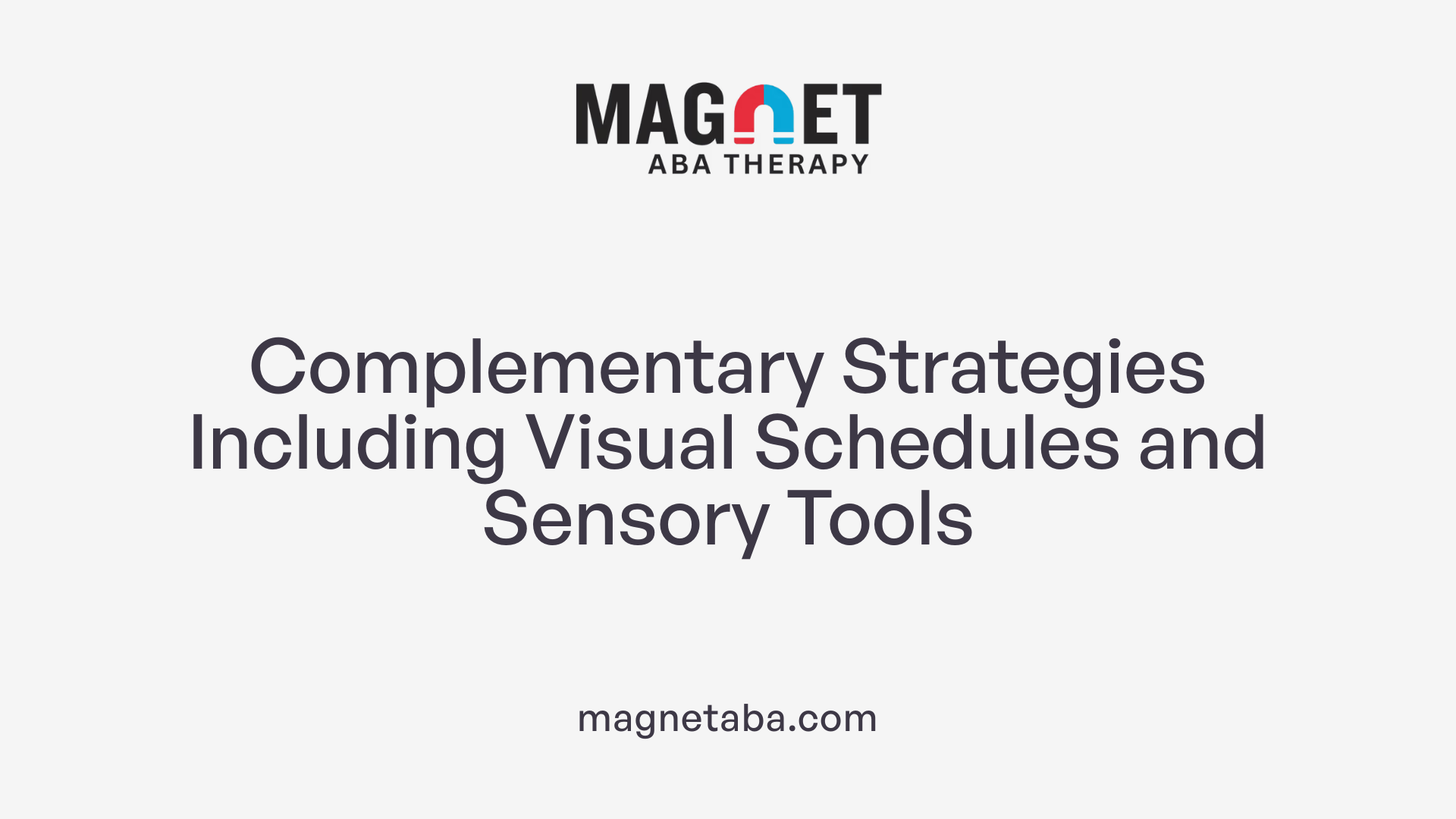
Use of Social Stories and Visual Schedules
Social stories and visual schedules are practical tools often used for children with autism who have limited verbal or cognitive abilities. Social stories break down social situations into simple, clear narratives to explain what to expect and how to respond. Visual schedules provide a predictable structure by outlining daily activities or steps in a task, helping children anticipate changes and reduce anxiety.
'If-Then' Boards for Predictability and Routine
'If-then' boards create straightforward cause-and-effect scenarios that help children understand what comes next. For example, "If we finish this task, then we can have playtime." These boards support consistency and routine, which are calming and reassuring for children who thrive on predictability.
Behavioral Interventions Targeting Antecedents and Consequences
Behavioral approaches focus on understanding what triggers (antecedents) a child's anxiety or challenging behaviors and what maintains them (consequences). By modifying the environment or response patterns, caregivers can encourage desired behaviors and decrease anxiety-related reactions.
Managing Anxiety Through Sensory Tools and Safe Spaces
Sensory sensitivities are common in children with autism. Creating sensory tools, such as weighted blankets or noise-canceling headphones, and providing safe spaces allow children to self-regulate their sensory experiences. These strategies can significantly reduce anxiety and create a calm environment.
Practical Calming Techniques and Coping Strategies
Simple calming methods like deep breathing, progressive muscle relaxation, and yoga help children manage anxiety physically and emotionally. Teaching these coping strategies, often paired with visual aids and parent support, empowers children to handle anxiety-provoking situations more effectively.
Integrating Cognitive Behavioral Therapy (CBT) and Exposure Techniques with Behavioral Approaches
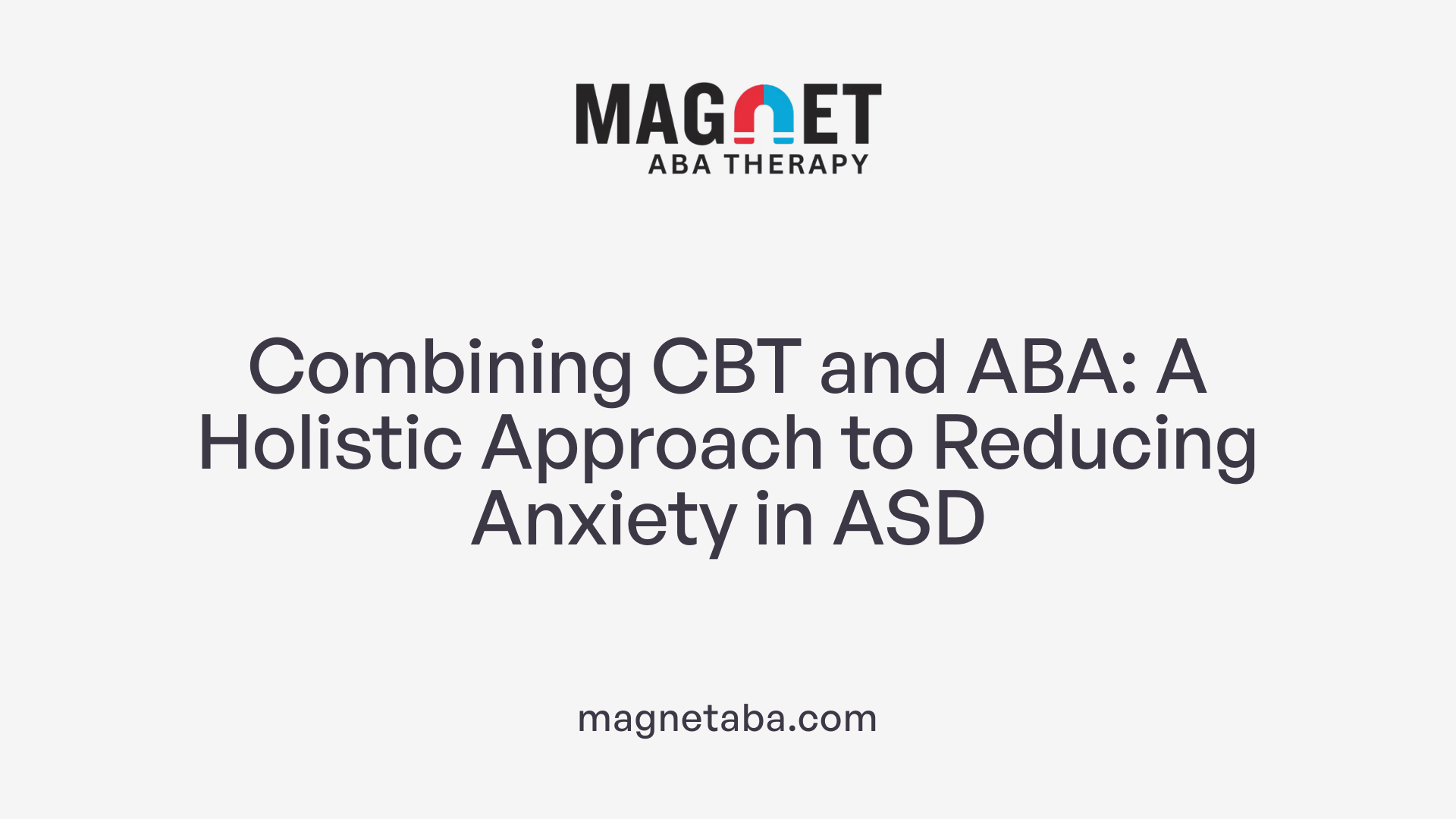
How is CBT adapted for verbal children with autism?
CBT is tailored for children with autism who have adequate verbal abilities by focusing on identifying and challenging their specific fears. Techniques emphasize clear, structured communication to help these children understand and manage their anxiety.
What role does exposure therapy play in reducing anxiety?
Exposure therapy, a component of CBT, involves systematically and gradually exposing children to feared situations or objects. This process helps to increase tolerance and decrease anxiety responses over time.
How are parents involved in implementing CBT techniques?
Parents and caregivers play a crucial role by supporting therapy practices at home. Under professional guidance, they utilize resources like books and manuals to reinforce CBT strategies, ensuring consistent application and helping children practice coping skills.
What programs are designed specifically for autistic children?
Two empirically supported programs, Behavior Interventions for Anxiety in Children with Autism (BIACA) and Facing Your Fears (FYF), adapt CBT for children on the autism spectrum. BIACA offers a manual-based, individualized approach with high parental involvement, whereas FYF is a group-based treatment focusing on peer support.
How do CBT and ABA strategies work together?
CBT and Applied Behavior Analysis (ABA) synergize by addressing anxiety from different angles — CBT targets the cognitive aspects of fear and anxiety, while ABA concentrates on modifying behaviors and reinforcing coping skills. This blend offers a comprehensive therapeutic approach that leverages structured learning alongside emotional regulation.
This integration of cognitive and behavioral techniques ensures that anxiety in children with autism is managed in a manner tailored to their unique developmental profiles and needs.
Additional Support Systems: Resources, Therapies, and Medication Considerations
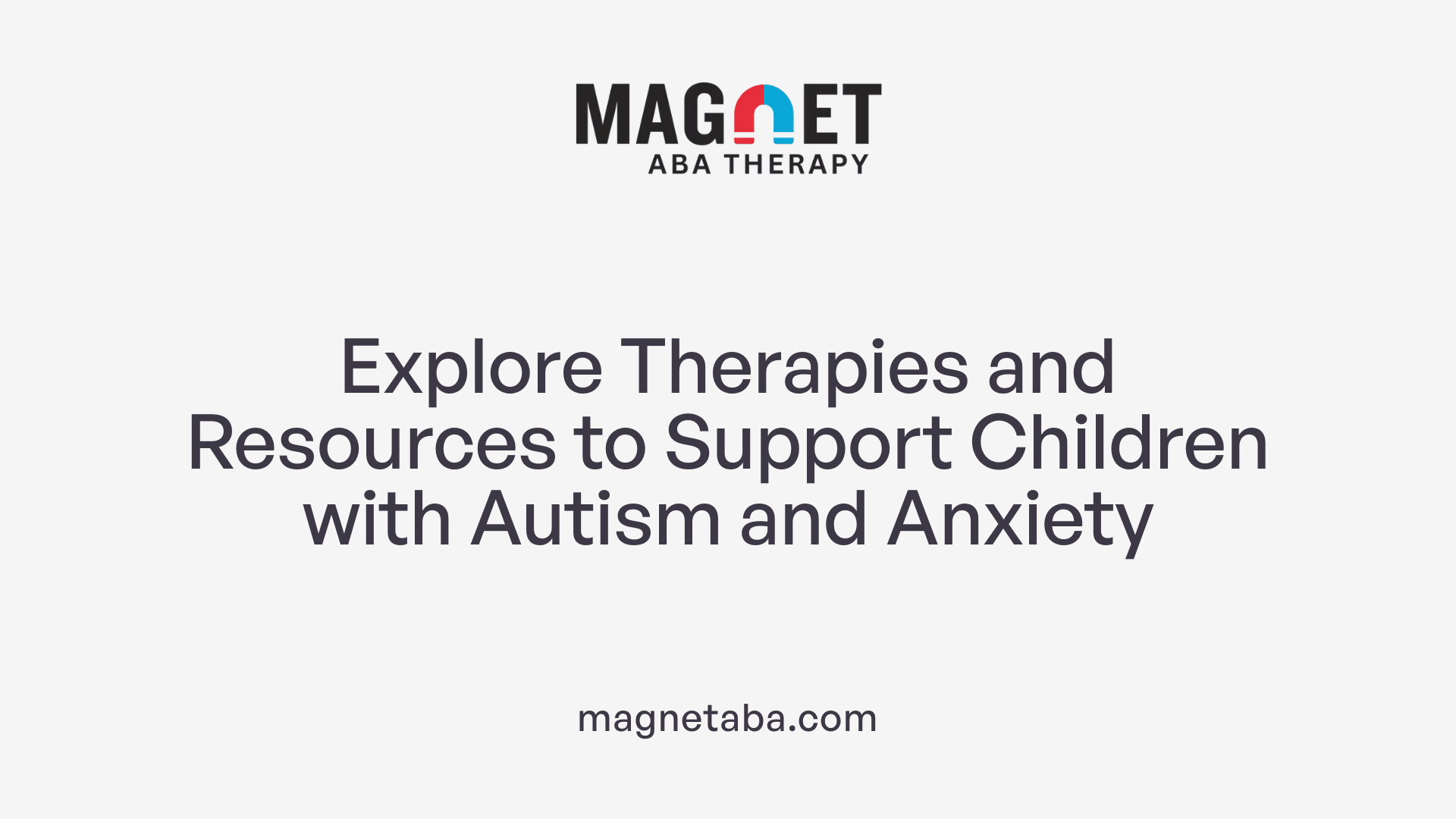
How can parents find professional therapists experienced in anxiety and autism?
Parents seeking qualified therapists for children with autism and anxiety are advised to use resources like Psychology Today. Such platforms allow filtering for professionals who specialize in cognitive behavioral therapy (CBT) and have experience with autism spectrum disorder, ensuring a more tailored and effective treatment approach.
What parent-focused programs support managing anxiety in children with autism?
Programs like Coping Cat provide structured CBT frameworks adaptable for children with ASD, helping parents understand and implement anxiety management strategies. Additionally, online tools such as Child Anxiety Tales offer accessible educational support to families, complementing professional therapy sessions.
Which complementary therapies benefit children with autism and anxiety?
Occupational therapy plays a vital role by helping children develop essential daily living skills, including dressing and social relating. Sensory integration therapy targets sensory processing challenges that often exacerbate anxiety symptoms. These therapies, when combined with behavioral approaches, provide comprehensive support addressing both emotional and functional needs.
What is the role of medication in managing anxiety symptoms?
While no medications treat core autism symptoms, some may be prescribed to manage co-occurring anxiety. Medication decisions should be made carefully under healthcare professional supervision, often as part of a broader treatment plan that includes behavioral and psychological therapies.
Why is ongoing reflection and monitoring important during therapy?
Regularly recording progress and reflecting on therapy outcomes helps track reductions in anxiety symptoms and reinforces children’s achievements. This ongoing assessment empowers children and parents by highlighting improvements, adjusting strategies if needed, and fostering resilience throughout the treatment journey.
Combining Strategies to Foster Emotional Well-being in Children with Autism and Anxiety
Managing anxiety in children with autism requires a multifaceted approach that combines evidence-based behavioral therapies like ABA with cognitive-behavioral techniques, tailored visual supports, and sensory interventions. Early and individualized treatment plans, delivered by qualified professionals and supported by informed caregivers, can significantly reduce anxiety symptoms and promote adaptive behaviors. Complementary strategies and ongoing monitoring ensure that interventions meet each child's evolving needs. With comprehensive support, children on the autism spectrum can develop resilience, emotional regulation, and improved social engagement, enhancing their quality of life and growth potential.
References
- Managing anxiety in children with autism
- ANXIETY AND AUTISM
- Treatment and Intervention for Autism Spectrum Disorder
- Strategies for Managing Anxiety in Children With Autism
- DINOSAUR: an integrated cognitive-behavioral treatment for ...
- Behavioral Interventions for Autism Spectrum Disorder
- How to Become an ABA Therapist - School of Education
- How to Become an Applied Behavior Analyst (ABA) Therapist












